Q. Why is my system filled with QBIT System Care pop-up alers? Here’s below how the QBIT System Care pop-ups looked like when I got it on my web browser. I have recently installed free applications to my system that protected by antivirus. Now my computer and web browser is being flooded with unwanted pop-ups, alerts and annoying ads. Please help me get rid of them!

QBIT System Care pop-up
A. We have investigated this problem and it appears to be adware/PUP is probably installed on your computer and/or internet browser. What does adware mean? Adware is type of malware that presents unwanted advertising on a PC, redirects search requests to advertising webpages and gathers personal info for marketing purposes. Adware software can show banner ads, full-screen advertisements, popups, videos, or other varieties of online advertising.
Does adware steal your confidential data? The adware software is often harmless, but sometimes the adware you inadvertently download can also be spyware. Spyware can sometimes seek out your personal information stored on the personal computer, gather this information and use it to steal your identity.
We strongly recommend that you perform the steps below that will allow you to remove QBIT System Care popups using the standard features of Windows and some proven freeware.
Remove QBIT System Care pop-ups (removal guide)
The adware software is a form of malware that you might have difficulty in removing it from your computer. Happily, you’ve found the effective QBIT System Care pop ups removal steps in this blog post. Both the manual removal method and the automatic removal way will be provided below and you can just select the one that best for you. If you have any questions or need assist then type a comment below. Certain of the steps below will require you to exit this website. So, please read the steps carefully, after that bookmark or print it for later reference.
To remove QBIT System Care, follow the steps below:
- Manual QBIT System Care removal
- How to remove QBIT System Care advertisements automatically
- Run AdBlocker to block QBIT System Care and stay safe online
- How can you prevent your computer from the attack of adware
- To sum up
Manual QBIT System Care removal
To delete QBIT System Care pop up advertisements, adware software and other unwanted software you can try to do so manually. Unfortunately some of the adware won’t show up in your program list, but some adware software may. In this case, you may be able to remove it via the uninstall function of your PC. You can do this by following the steps below.
Uninstall dubious programs using Windows Control Panel
We recommend that you begin the machine cleaning process by checking the list of installed software and uninstall all unknown or questionable apps. This is a very important step, as mentioned above, very often the malicious software such as adware and browser hijacker infections may be bundled with free programs. Remove the unwanted software can remove the annoying ads or internet browser redirect.
Press Windows button ![]() , then press Search
, then press Search ![]() . Type “Control panel”and press Enter. If you using Windows XP or Windows 7, then click “Start” and select “Control Panel”. It will show the Windows Control Panel like below.
. Type “Control panel”and press Enter. If you using Windows XP or Windows 7, then click “Start” and select “Control Panel”. It will show the Windows Control Panel like below.
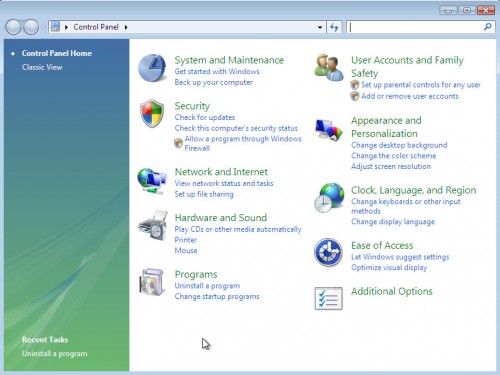
Further, click “Uninstall a program” ![]()
It will open a list of all software installed on your computer. Scroll through the all list, and uninstall any dubious and unknown applications.
Remove QBIT System Care pop-up ads from Google Chrome
Reset Chrome will allow you to get rid of QBIT System Care ads from your internet browser as well as to recover web browser settings infected by adware software. All undesired, malicious and ‘ad-supported’ plugins will also be uninstalled from the web-browser. It will keep your personal information such as browsing history, bookmarks, passwords and web form auto-fill data.
Open the Chrome menu by clicking on the button in the form of three horizontal dotes (![]() ). It will show the drop-down menu. Choose More Tools, then click Extensions.
). It will show the drop-down menu. Choose More Tools, then click Extensions.
Carefully browse through the list of installed extensions. If the list has the extension labeled with “Installed by enterprise policy” or “Installed by your administrator”, then complete the following instructions: Remove Google Chrome extensions installed by enterprise policy otherwise, just go to the step below.
Open the Chrome main menu again, click to “Settings” option.

Scroll down to the bottom of the page and click on the “Advanced” link. Now scroll down until the Reset settings section is visible, like below and press the “Reset settings to their original defaults” button.

Confirm your action, press the “Reset” button.
Remove QBIT System Care pop ups from Internet Explorer
The Internet Explorer reset is great if your web browser is hijacked or you have unwanted addo-ons or toolbars on your web browser, which installed by an malicious software.
First, start the Microsoft Internet Explorer, then press ‘gear’ icon ![]() . It will open the Tools drop-down menu on the right part of the web-browser, then click the “Internet Options” as displayed in the figure below.
. It will open the Tools drop-down menu on the right part of the web-browser, then click the “Internet Options” as displayed in the figure below.

In the “Internet Options” screen, select the “Advanced” tab, then press the “Reset” button. The IE will display the “Reset Internet Explorer settings” dialog box. Further, click the “Delete personal settings” check box to select it. Next, click the “Reset” button as displayed in the following example.

Once the procedure is finished, press “Close” button. Close the Microsoft Internet Explorer and restart your PC for the changes to take effect. This step will help you to restore your web-browser’s new tab, start page and default search provider to default state.
Get rid of QBIT System Care pop-ups from Mozilla Firefox
If Mozilla Firefox settings are hijacked by the adware software, your internet browser displays annoying popup ads, then ‘Reset Mozilla Firefox’ could solve these problems. It will save your personal information such as saved passwords, bookmarks, auto-fill data and open tabs.
Start the Firefox and click the menu button (it looks like three stacked lines) at the top right of the internet browser screen. Next, click the question-mark icon at the bottom of the drop-down menu. It will display the slide-out menu.
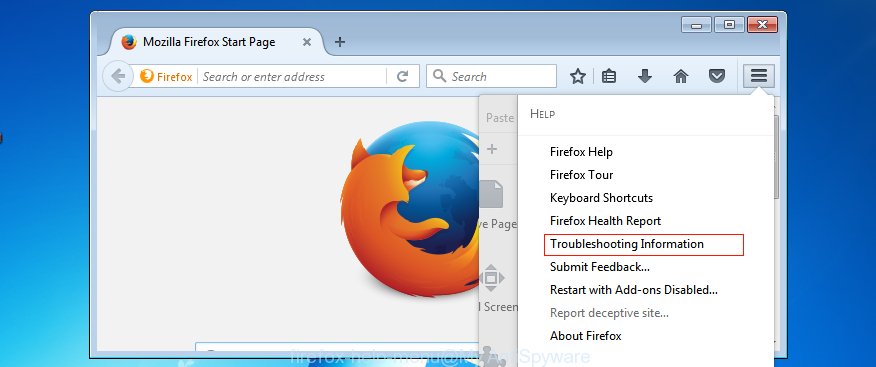
Select the “Troubleshooting information”. If you are unable to access the Help menu, then type “about:support” in your address bar and press Enter. It bring up the “Troubleshooting Information” page as shown in the figure below.

Click the “Refresh Firefox” button at the top right of the Troubleshooting Information page. Select “Refresh Firefox” in the confirmation dialog box. The Mozilla Firefox will begin a process to fix your problems that caused by the QBIT System Care adware software. When, it is finished, press the “Finish” button.
How to remove QBIT System Care advertisements automatically
If your machine is still infected with adware that responsible for web-browser redirect to the unwanted QBIT System Care site, then the best method of detection and removal is to use an anti-malware scan on the personal computer. Download free malicious software removal tools below and start a full system scan. It will help you remove all components of the adware software from hardisk and Windows registry.
Scan and clean your internet browser of QBIT System Care pop ups with Zemana AntiMalware (ZAM)
You can download and use the Zemana for free. This antimalware utility will scan all the MS Windows registry entries and files in your computer along with the system settings and internet browser extensions. If it finds any malware, adware or harmful add-on that is related to QBIT System Care popups then the Zemana Anti Malware will get rid of them from your computer completely.

- Download Zemana Anti Malware (ZAM) by clicking on the following link.
Zemana AntiMalware
165488 downloads
Author: Zemana Ltd
Category: Security tools
Update: July 16, 2019
- Once the downloading process is finished, close all software and windows on your computer. Open a file location. Double-click on the icon that’s named Zemana.AntiMalware.Setup.
- Further, press Next button and follow the prompts.
- Once install is complete, click the “Scan” button for scanning your system for the adware that causes a large number of undesired QBIT System Care pop-up advertisements. A system scan may take anywhere from 5 to 30 minutes, depending on your machine. While the Zemana Free utility is scanning, you can see how many objects it has identified as being affected by malicious software.
- When the checking is complete, Zemana Anti-Malware (ZAM) will create a list of unwanted programs adware. Once you’ve selected what you want to delete from your computer click “Next”. After that process is finished, you can be prompted to restart your PC.
Scan and clean your PC of adware software with HitmanPro
Hitman Pro is a free removal tool that can scan your computer for a wide range of security threats like malicious software, adwares, potentially unwanted programs as well as adware that responsible for the appearance of QBIT System Care advertisements. It will perform a deep scan of your personal computer including hard drives and Windows registry. When a malware is found, it will help you to remove all detected threats from your system with a simple click.
Visit the page linked below to download the latest version of HitmanPro for Windows. Save it directly to your MS Windows Desktop.
After the downloading process is finished, open the directory in which you saved it. You will see an icon like below.

Double click the HitmanPro desktop icon. Once the tool is started, you will see a screen as displayed in the following example.
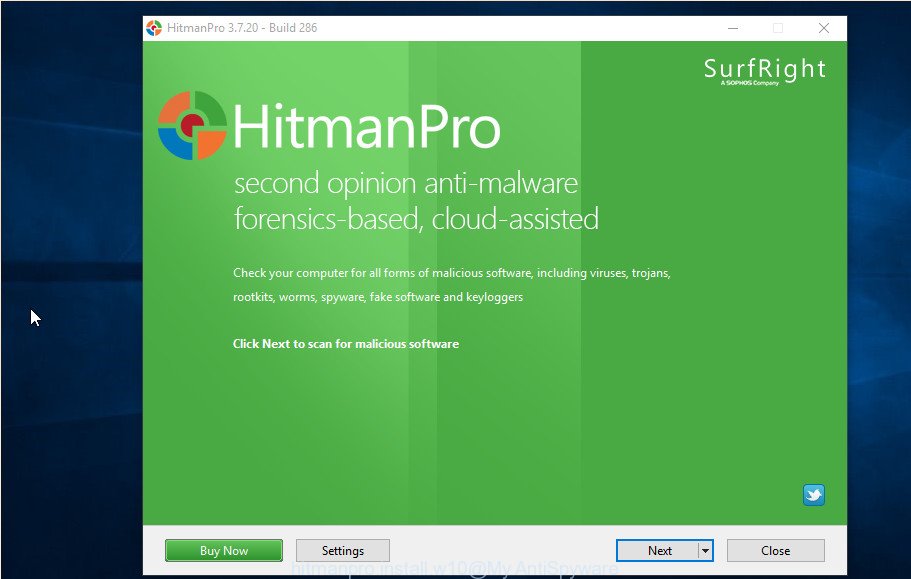
Further, press “Next” button to search for adware responsible for QBIT System Care advertisements. This procedure can take some time, so please be patient. Once Hitman Pro has completed scanning your computer, HitmanPro will show a list of all threats detected by the scan as displayed below.
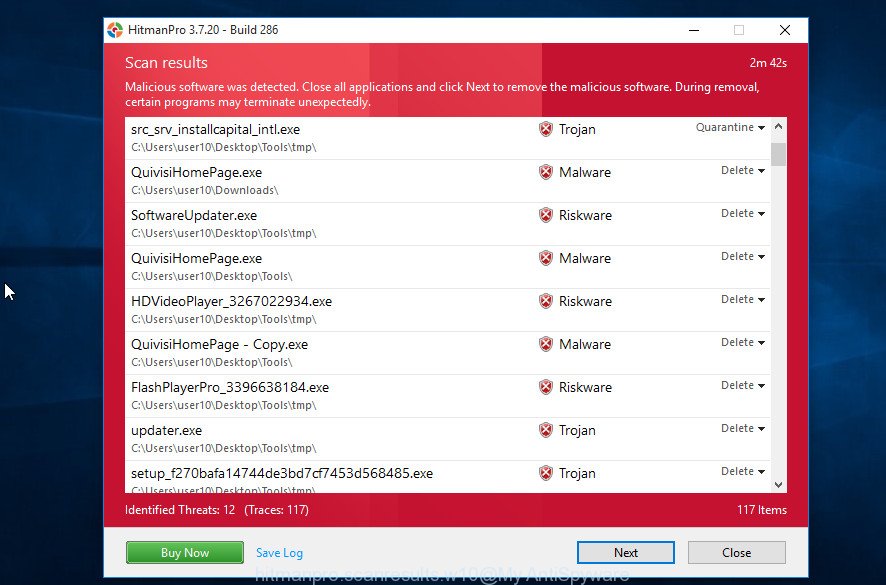
Make sure all threats have ‘checkmark’ and press “Next” button. It will show a dialog box, click the “Activate free license” button.
Run MalwareBytes to remove QBIT System Care pop-ups
Manual QBIT System Care ads removal requires some computer skills. Some files and registry entries that created by the adware software may be not completely removed. We suggest that run the MalwareBytes Anti Malware (MBAM) that are fully clean your PC of adware software. Moreover, the free program will allow you to remove malicious software, PUPs, browser hijacker infections and toolbars that your computer can be infected too.
Installing the MalwareBytes Anti Malware is simple. First you’ll need to download MalwareBytes Free on your Windows Desktop from the link below.
327709 downloads
Author: Malwarebytes
Category: Security tools
Update: April 15, 2020
Once downloading is done, close all apps and windows on your machine. Double-click the install file called mb3-setup. If the “User Account Control” prompt pops up as shown below, click the “Yes” button.
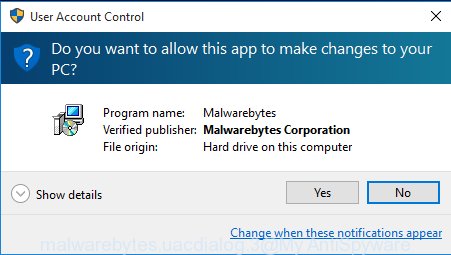
It will open the “Setup wizard” that will help you install MalwareBytes Anti-Malware (MBAM) on your computer. Follow the prompts and don’t make any changes to default settings.
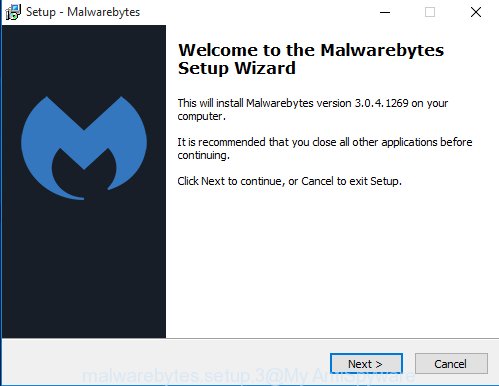
Once setup is finished successfully, click Finish button. MalwareBytes Anti Malware will automatically start and you can see its main screen like below.
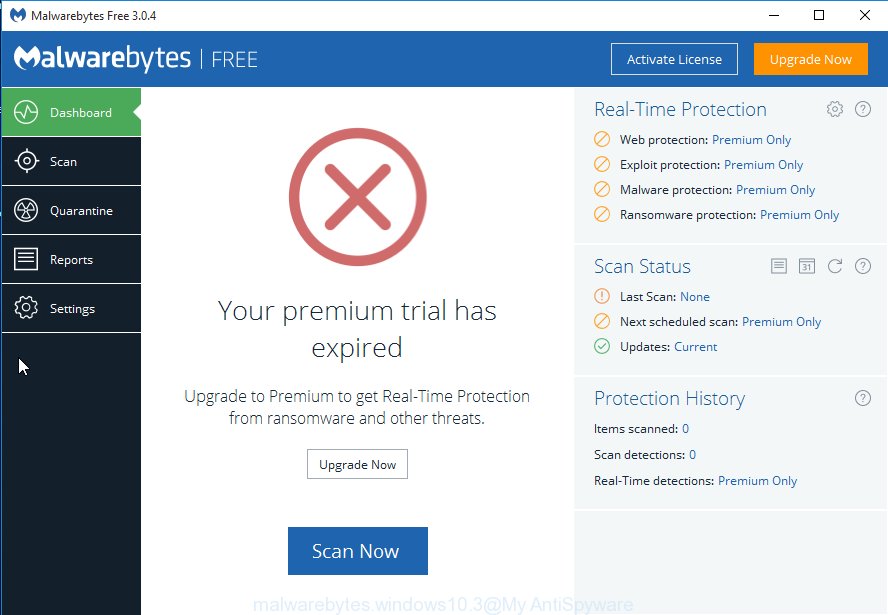
Now click the “Scan Now” button to perform a system scan with this utility for the adware which causes unwanted QBIT System Care pop ups. A system scan can take anywhere from 5 to 30 minutes, depending on your computer. While the MalwareBytes AntiMalware tool is checking, you can see count of objects it has identified as being infected by malicious software.
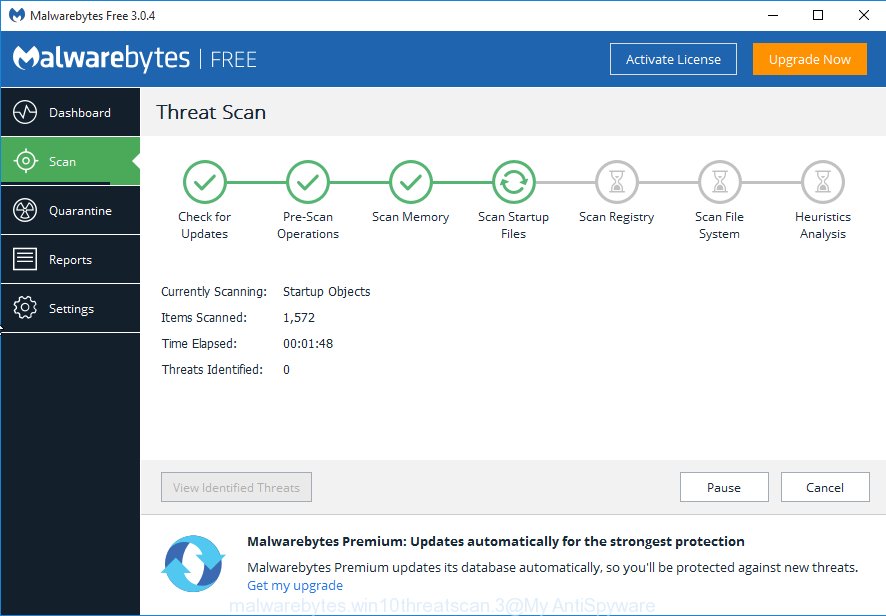
When MalwareBytes Anti Malware completes the scan, MalwareBytes Free will show a list of found threats. Next, you need to click “Quarantine Selected” button. The MalwareBytes AntiMalware (MBAM) will get rid of adware responsible for redirecting your web browser to the QBIT System Care page and move threats to the program’s quarantine. Once that process is done, you may be prompted to restart the computer.

We recommend you look at the following video, which completely explains the procedure of using the MalwareBytes AntiMalware to remove adware software, browser hijacker and other malicious software.
Run AdBlocker to block QBIT System Care and stay safe online
Enabling an ad-blocking program like AdGuard is an effective way to alleviate the risks. Additionally, ad-blocking apps will also protect you from malicious advertisements and websites, and, of course, block redirection chain to QBIT System Care and similar web sites.
- Visit the page linked below to download the latest version of AdGuard for Microsoft Windows. Save it to your Desktop.
Adguard download
27033 downloads
Version: 6.4
Author: © Adguard
Category: Security tools
Update: November 15, 2018
- When downloading is finished, run the downloaded file. You will see the “Setup Wizard” program window. Follow the prompts.
- Once the installation is finished, click “Skip” to close the installation program and use the default settings, or click “Get Started” to see an quick tutorial that will assist you get to know AdGuard better.
- In most cases, the default settings are enough and you don’t need to change anything. Each time, when you run your machine, AdGuard will run automatically and stop unwanted advertisements, block QBIT System Care, as well as other malicious or misleading websites. For an overview of all the features of the program, or to change its settings you can simply double-click on the icon called AdGuard, that can be found on your desktop.
How can you prevent your computer from the attack of adware
In order to avoid unintentionally installing adware yourself, please follow these good security practices: don’t click on links within pop-up windows, because clicking on the link may install malicious software on your system; don’t use Quick install method, because using Quick method you may have let malicious software get inside the personal computer.
To sum up
Now your PC system should be clean of the adware software that cause intrusive QBIT System Care popup advertisements to appear. We suggest that you keep Zemana AntiMalware (to periodically scan your personal computer for new adwares and other malware) and AdGuard (to help you stop undesired popup advertisements and malicious websites). Moreover, to prevent any adware software, please stay clear of unknown and third party software, make sure that your antivirus program, turn on the option to search for PUPs.
If you need more help with QBIT System Care pop ups related issues, go to here.




















